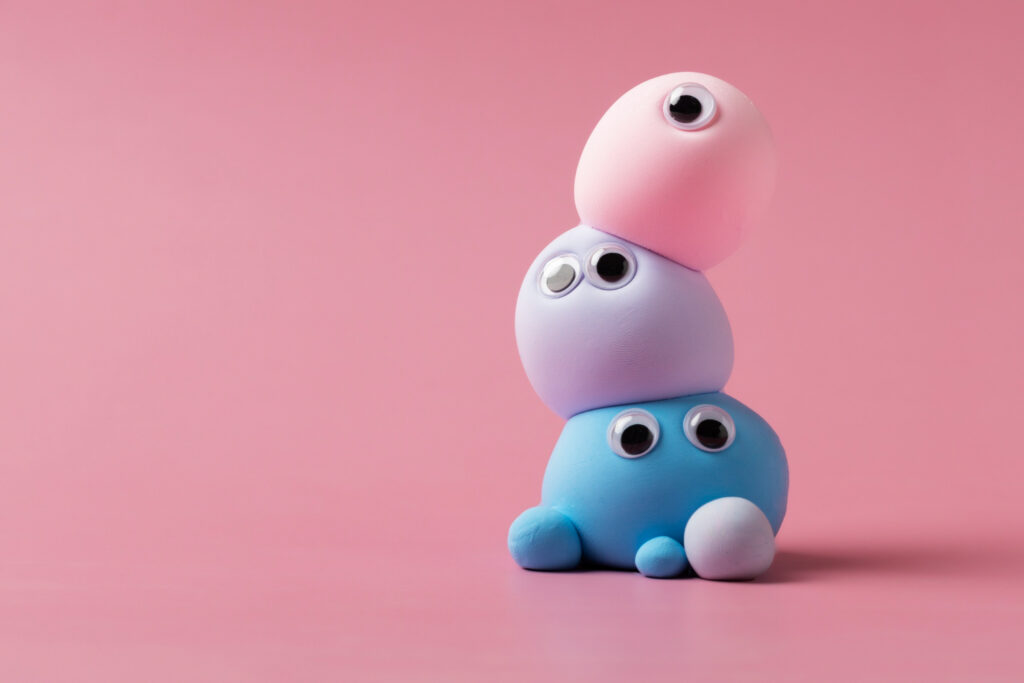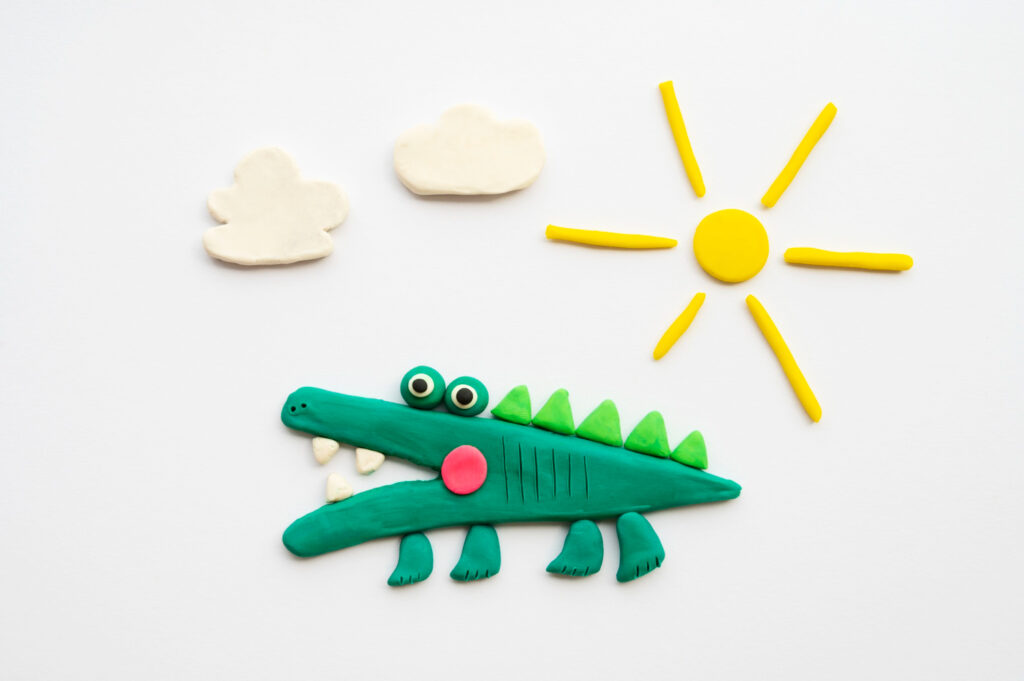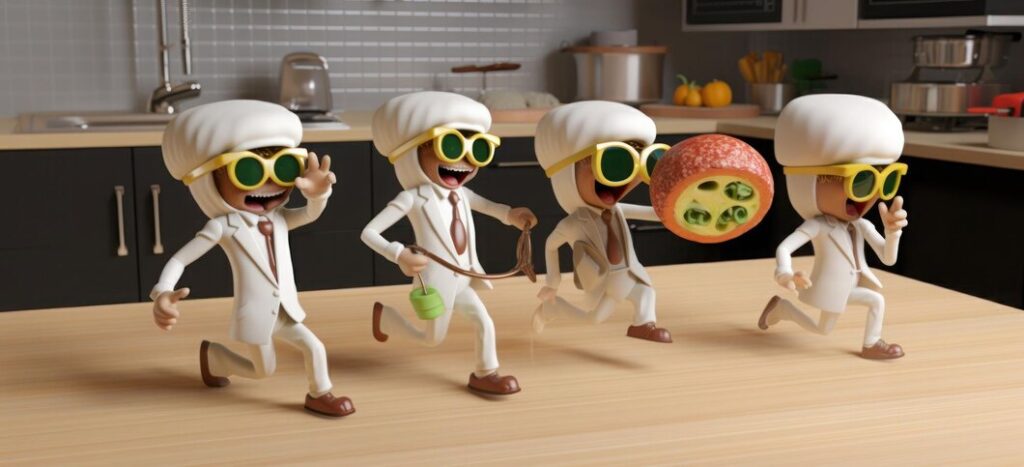You’ve seen those quirky stop-motion animated films and shows made from molding clay characters, but have you ever wondered how claymation is made? Claymation, the art of animating clay figures, is a fascinating process that requires immense patience and skill. As an animator, you get to play God, molding and shaping characters from clay and then magically bringing them to life, frame by frame.
From crafting the clay figures and sets to choreographing movements and facial expressions, and then finally stringing it all together during the extensive filming and editing process, Creating a short 30-second clip can take weeks or even months.
If you’ve ever been curious about this quirky art form, read on to discover the magic behind claymation animation.

What is claymation in animation?
What is clay animation? Claymation is a fun, creative form of stop-motion animation that uses clay models. Animators mold and shape characters and objects out of clay, then manipulate them ever so slightly between frames to create the illusion of movement when the frames are played in sequence.
The basic process
The claymation process starts with developing an initial concept and storyboard. Then, animators create their clay characters, props, and sets. They position everything for the first frame and take a photo. For the next frame, they move the clay models slightly, take another photo, and so on. By making small changes and taking hundreds of photos, they can create a short animated sequence.
It takes patience
In contrast to the other 10 types of animation, claymation movies are quite new. Creating claymation requires patience and precision. Animators may need to move a character’s arm just a fraction of an inch or change the position of a prop by mere millimeters between frames to get smooth motion. How to use Claymation tools like sculpting knives, toothpicks, and cotton swabs to manipulate the clay without leaving fingerprints and shooting one second of footage can take hours or even days of work.
Popular examples
Here are some examples of when claymation was invented: Some well-known examples of claymation include the California Raisins commercials from the 1980s, the animated series Davey and Goliath, and award-winning short films like Creature Comforts by Aardman Animations. Of course, Aardman and director Nick Park are best known for the beloved claymation characters Wallace and Gromit.
With time and creativity, claymation can bring some amusing and memorable characters to life.

What does claymation do?
Claymation animation, also known as clay animation or stop-motion animation, is an animation technique that brings static objects to life using a frame-by-frame method of movement. An animator painstakingly adjusts each frame in claymation before it is taken. When the frames are played in sequence, the clay figures appear to move on their own.
Claymation allows animators to create a unique visual style and make the impossible possible. Objects that can’t move in real life seem to become animated. This opens up a world of storytelling potential, limited only by the animator’s imagination.
Some of the most well-known uses of claymation include the California Raisins commercials, Wallace and Gromit shorts, Tim Burton’s The Nightmare Before Christmas, and the films of animator Nick Park. Creating claymation requires patience and attention to detail, as each frame must be delicately adjusted, photographed, and then put into the sequence to create the illusion of movement. But the end result can be magical.
How does claymation actually work?
Claymation, or clay animation, is a fun and creative animation technique where clay figures are filmed frame by frame as they are manipulated to create the illusion of movement. Animating with clay allows you to bring any character or creature to life. Here’s how to do claymation work:
- Create your characters
First, you’ll need to construct your characters out of clay. Roll, mold, and sculpt the clay into the shapes and figures you want to animate. Add details like eyes, nose, mouth, hair, and clothes to help bring your characters to life. Let the clay firm up slightly so the characters can stand on their own.
- Build your set
Now create the set where your claymation story will unfold. This could be a landscape, room, or any environment for your characters to interact in. Construct the set out of clay, paper mâché, cardboard, or any materials you want. The set forms the backdrop and context for your 3D animation.
- Move your characters
This is where the magic happens. Move your clay characters slightly while filming a frame at a time. Then move them again for the next frame. Repeat this process, moving the characters a tiny bit each time. When the frames play back in quick succession, it will appear as if the characters are moving smoothly on their own. Start out with easy gestures and movements like walking and head-turning. For smooth animation, shoot at a frame rate of roughly 12 frames per second.
- Edit and add effects
Once filming is complete, you’ll need to edit your frames together into a full animation sequence. To import your image frames and play them back at the chosen frame rate, use video editing software like iMovie, Adobe Premiere, or Windows Movie Maker. To improve your claymation, you can also add extras like titles, voiceovers, background music, and sound effects.
Consider adding camera pans, zooms, and multiple camera angles to make the animation more dynamic.
- Share your creation!
After editing, you can share your claymation video with others. Post to video-sharing sites like YouTube, Vimeo, or Facebook. You can also enter your animation into film festivals to reach a wider audience. Creating claymation animations is a fun, hands-on activity for people of all ages to enjoy. With some creativity and patience, you can craft memorable claymation stories and characters.
The Animation Process, Step-by-Step
The claymation animation process involves many steps to create a short film. It requires patience and dedication, but with some time and practice, you can master the art of clay animation.
- Develop your story
First, come up with an idea or story you want to tell. Even short claymation films need a simple plot to follow. Sketch your storyboard to map out key scenes and transitions. Figure out any props or sets you need to build. A good storyboard will serve as your guide throughout the animation process.
- Create your clay characters and sets
Once you have your story fleshed out, it’s time to mold your clay characters and build any required sets. Use pliable clay, like plasticine modeling clay. Roll, squeeze, and shape the clay to form your characters. Add details to bring your characters to life, like eyes, hair, and clothes. Build simple sets using materials like cardboard, paper, and fabrics.
- Set up your camera and lighting
You’ll need a digital camera on a tripod to capture your claymation frames. Place it overhead, facing straight down at your set. Use additional lighting, like desk lamps or spotlights, to eliminate any shadows. Make sure your camera settings are optimized for the animated motion graphics. A high shutter speed, around 1/125 second, works well.
- Take your first frame
Once your camera and lighting are set up, take a picture of your first frame. This initial frame establishes your starting position. Make very small changes to the clay characters and sets between each frame. Move the elements a tiny bit, then take another picture. Repeat this process for all frames in your scene.
- Review and edit your frames
After shooting all frames for your scene, review each frame to ensure the movements are smooth and cohesive. Make any needed edits before moving on to the next scene. You may need to reshoot certain frames or add transitional frames to improve the overall flow. Edit your frames together using video editing software to create your finished claymation short.
- Add the finishing touches
Finally, you can add music, sound effects, and titles to finish your claymation film. Add background music and sounds to set the right mood and bring your characters to life. Opening and closing titles provide context for viewers about your short film. With some patience and practice, you’ll be creating memorable claymation films in no time!

Advantages and disadvantages of claymation
“Claymation” is a creative and enjoyable filmmaking technique, but it does have some pros and cons of its own. As with any art form, it’s important to go into a claymation project with realistic expectations about the challenges involved.
Advantages
- One of its biggest benefits is tactile nature. You get to work with your hands to physically craft characters, sets, and props. This can be a very rewarding process for creators and makers.
- Claymation also provides a lot of creative freedom since you have total control over what you’re animating. You can bring any character or world to life.
- Another advantage of claymation is that it’s a great way to learn patience and problem-solving skills. Animating clay characters frame by frame teaches you how to think through complex movements and make quick adjustments. These are useful abilities that translate to many areas of life.
- Finally, claymation films have a nostalgic, handcrafted feel that many viewers find charming. The amount of time and care put into moving clay characters can resonate with audiences.
Many claymation films have gone on to become classics because of this artisanal quality.
Disadvantages
- The biggest downside of claymation is that it requires an incredible amount of time, patience, and manual labor. Animating clay characters frame by frame can take weeks, months, or even years for complex films.
- If you’re working alone or with a small team, the workload can feel overwhelming.
- Claymation also poses technical challenges. It can be difficult to achieve smooth movements and seamless transitions, especially for beginners.
- Getting the timing, framing, and details of facial expressions and gestures just right takes a lot of practice.
- Another potential disadvantage is that claymation films may feel outdated or obsolete compared to modern CGI animation.
- Some viewers perceive claymation as of lower quality, even though it’s an art form in itself. Lack of mainstream popularity can make claymation projects less commercially viable.
However, for creators passionate about the medium, the rewards of claymation far outweigh these challenges. With enough dedication, skill, and creativity, claymation’s disadvantages can be overcome to produce a truly memorable film. If this unique art form speaks to you, don’t let its difficulties deter you. With practice, claymation can be highly satisfying and meaningful.
Conclusion
So now you know the basics of claymation animation. It’s a fun art form that allows you to bring life to lumps of clay. With some patience and creativity, you can craft memorable characters and worlds.



